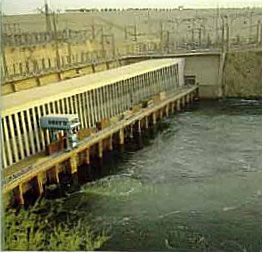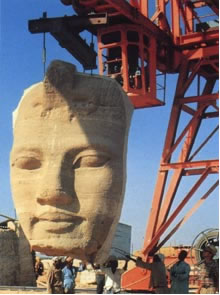The Aswan dam project has proven to be a success. The dams' walls are spun by the force of the Nile's whirling turbines that now generate about a quarter of Egypt’s electricity. Egypt has now less to fear from drought than its neighbors from the great Lake Nassar which can store several years worth of water. Once land that was only desert, has now been turned into farmland due to the pumps and canals fed by the reservoir. The farmers of the farmland are now able to water their fields year round,which means the nation is no longer at the mercy of the flood. Hydroeleticity is used for the countys commercial and residential needs and is produced at the dams power station. This generates about 25% of the countries electricity. On the down side, farmers tend to overuse the available water therefore by accidentally adding too much slat to their fertile land. Farmers now have to buy expensive artificial fertilizers because the free fertilizer provided by the Ethiopian silt is locked up behind the dam.
Scientists also blame the dam for an increase of a disease called schistosomiasis, which causes intestinal and urinary infections. Schistosomiasis is transmitted by microscopic worms that breed in snails living in the Nile and its canals. The worms are discharged into the Nile and its canals, where they bore into the skin of people who wash clothes, bathe, or swim in the water. Before year-round irrigation became available, the snails died when the canals dried up. Today, however, the canals are full all year, enabling the snails to live and the disease to spread rapidly. (Hobbs 2003) |


